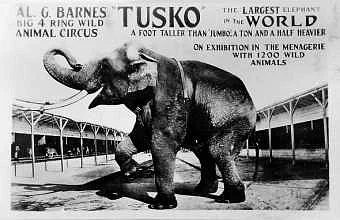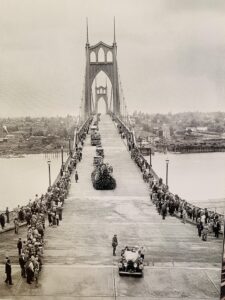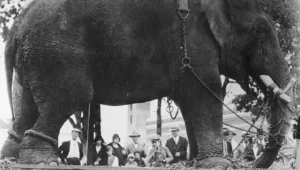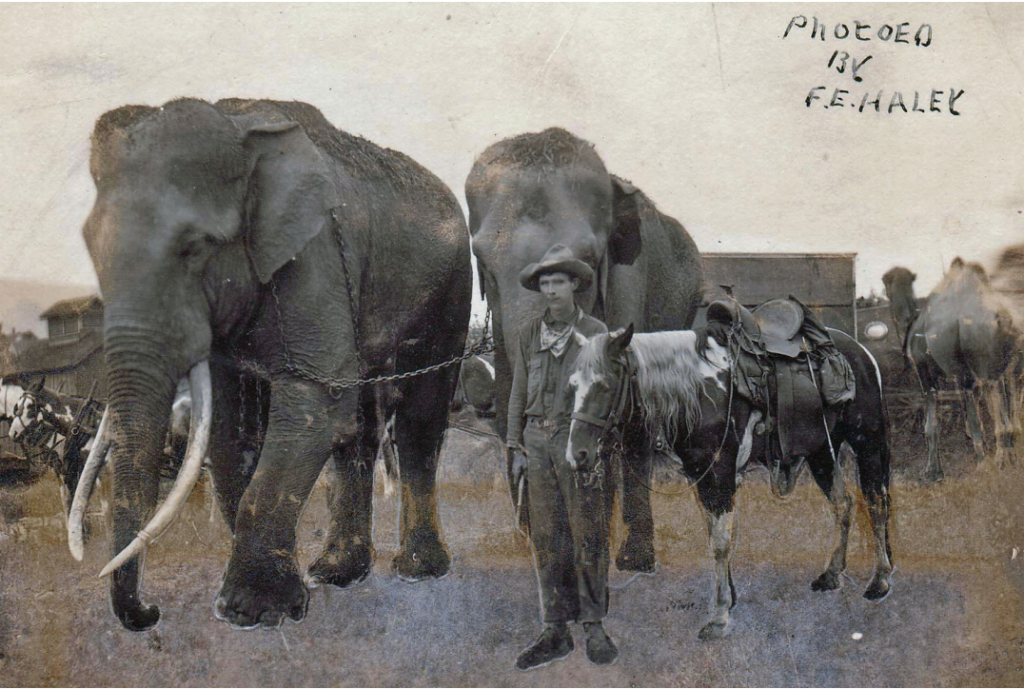What animal marched next to two dump trucks during the dedication of the St. Johns Bridge in 1931?
Answer: An Elephant



Tusko, a male asian elephant, lived a horrible life in the United States. Born in Siam (Thailand) in 1892 this male Asian Elephant was ship to New York City at the age of six. The elephant performed under the name Ned until he was resold in 1921; renamed Tusko because of his 7 foot long tusks. By that time Tusko was 10’2″ tall and considered to be the “meanest” and possibly the largest performing circus elephant in the US. Tusko had escaped a circus in 1922 causing $20,000s worth of damage over a distance of 30 miles. In 1931 Tusko was sold to the owner of the Lotus Isle, Portland’s largest and shortest lived amusement park built on Hayden Island in 1930. The publicist billed the elephant as “Tusko the Magnificent”. Disaster struck on March 23, 1931 when a plane crash at Lotus Isle into the artificial mountain of the Scenic Railway scaring Tusko and sending him on a rampage of destruction. It boggles the mind that three months later Tusko would be forced to join the dedication for the St. Johns Bridge on Saturday June 13, 1931. He was chained in front and back to dump trucks owned by Wentworth & Irwin. Lotus Isle was not able to recover from the damage and closed in the winter on 1932.

Life only went down hill for Tusko when his owner abandoned him at the Oregon State Fair in 1931 where he had been exhibited chained to a flatbed trailer. His final living years were spent at the Seattle Zoo where he died of a blood clot because the Zoo did not provide the space he needed to amble.
According to an August 25, 2017 story in the Statesmen Journal his bones traveled “as a sideshow act for about 15 years before being donated in December 1954 to the University of Oregon Museum of Natural History.”

